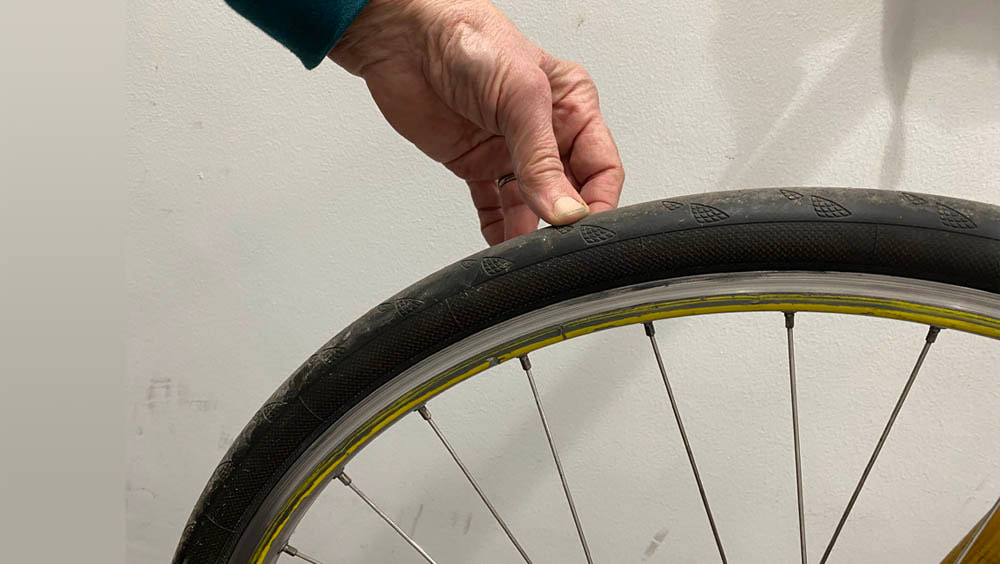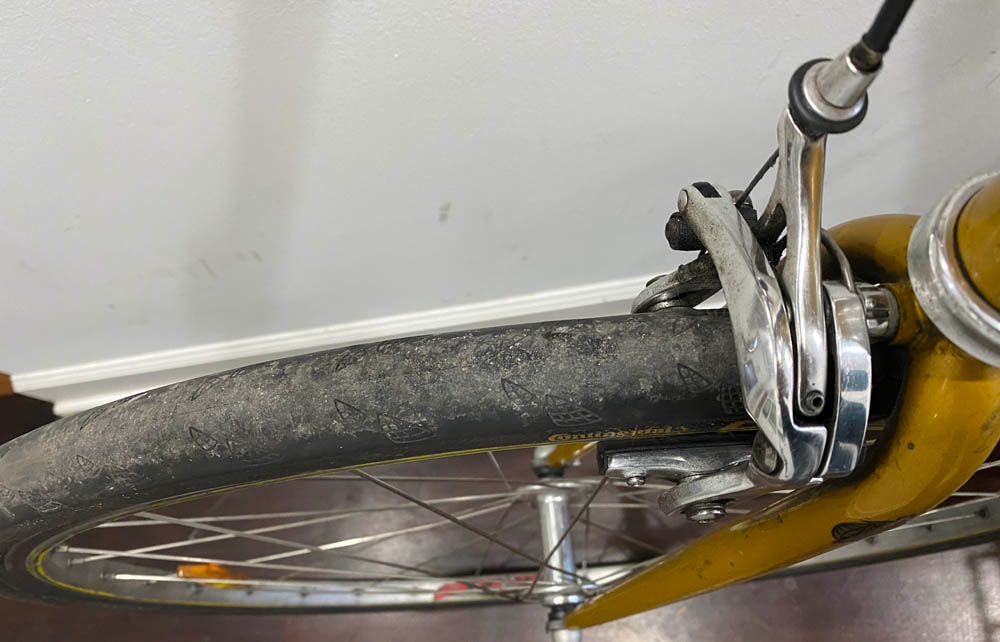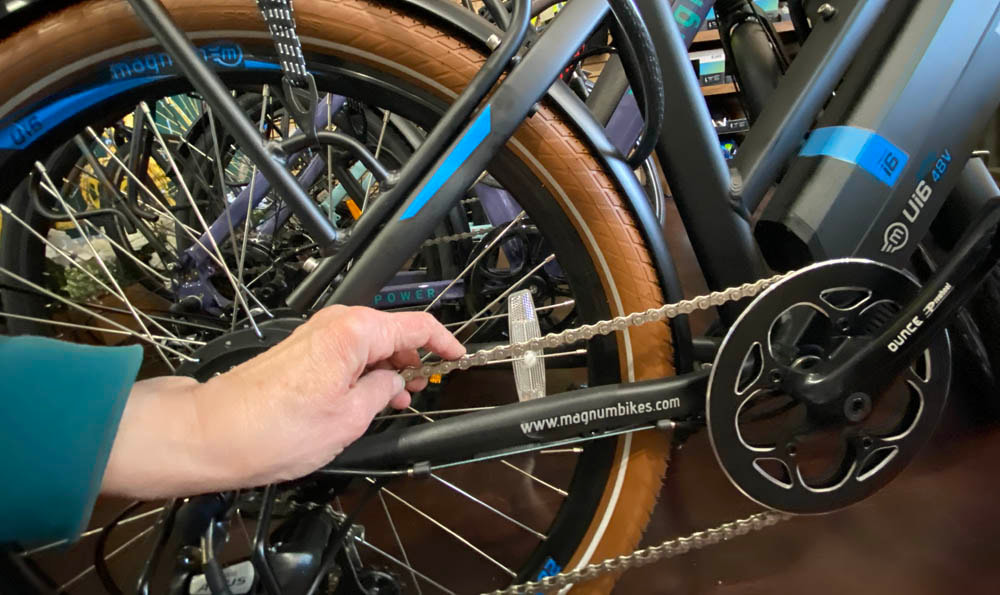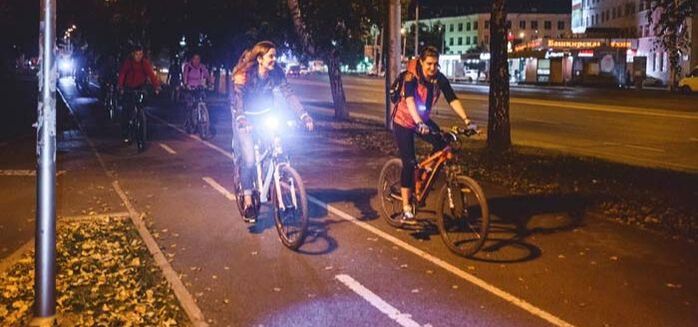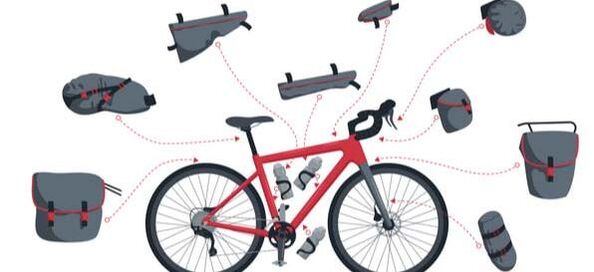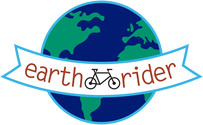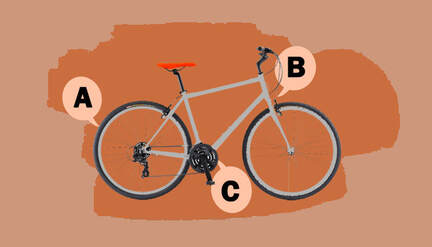 Few people get excited about the topic of safety but it is something we all know we need to take seriously. During a pandemic we are told to be safe by washing our hands, disinfecting surfaces and wearing a mask. At the workplace we take steps to understand hazards and wear protective equipment. At home we lock our doors and windows, shovel our walks of snow and if we have small children, cover electrical outlets and hide cords. In the car we wear a seat belt and follow traffic laws. On the bike, there are also safety protocols, like wearing a helmet and being predictable. But there is one safety practice that is widely recommended even before beginning to ride. The League of American Bicyclists, a national bike advocacy organization founded in 1880 during the time of high wheel bikes and continues today as the leader of the movement to create a Bicycle Friendly America for everyone, is widely attributed as the creator of the ABC Quick Check. The method it created has been interpreted, adapted, and widely adopted by cycling clubs, charity rides, and communities. A Google search on ABC Quick Check results in 99 million results. The League makes a case for performing a brief check of your bike before every ride. Between the last ride you took and this one, something could have changed on your bike either organically or intentionally. Cyclists are responsible for their own safety and keeping their riding equipment in good working order, so it is good to get into the habit of checking your equipment before every ride. Small adjustments can make a significant difference in your experience. You may think that you do not have the time to perform a safety check before every ride, but it need not be a time-consuming exercise. In the Google search we did on ABC Quick Check there were many videos demonstrating the technique starting at 32 seconds—so with practice it can be done very quickly. ABC Quick Check is an acronym for what you need to check before every ride and the clever combination makes it easy to remember. Let’s review all the components of the process. A is for Air Check your tires for air. Properly inflated tires are not only important for safety reasons, they're also essential for an enjoyable, efficient ride. You will have to work less if you tires are properly inflated, your bike will roll easier, although factors such as temperature, and the age and wear of your tires and rims, also play a part. The average tire loses about 3 pounds of pressure a day, which equates to 10-20 pounds over a week’s time, so although a few pounds will not be significant, it can add up over a short period of time. That's why it's important to check your pressure before every ride.
B is for Brakes Nothing can get you into trouble on a bike quicker than not being able to stop when you need to, so it is important to check your brakes every time you ride.
C is for Crank and Chain The crank and chain are parts of the drive chain and are close to each other on the bike and easy to check together.
Q is for Quick Releases If your bike has quick release levers the “Q” is a reminder to check they are in the closed position and fit tightly. Quick release levers are often found on wheel hubs and at the seat post connection. Quick release levers are not on all bikes. Some wheels and seat posts are secured with a bolt or with a locking skewer. These quick release levers are designed to enable the wheels to be removed and the saddle to be repositioned without any tools and although they do not work their way lose by themselves, if they were not attached or tightened correctly or if they were tampered with, it could be a serious safety hazard. Hold the closed end of the quick release lever with one hand and the lever with the other and turn the lever until it is tight enough to press close with the heel of your hand. If it is too tight, you will not be able to close it and if it is too loose it will be floppy, so find the perfect setting. Check is for Check it Over Lift the bike off of the ground, give it a shake and then, from a height of only an inch or so, drop it. What you're looking and listening for are rattles or other noises that might indicate a problem. Tighten what rattles. Safety Equipment While not officially part of the ABC Quick Check procedure, there are a few pieces of safety equipment that are worth mentioning. Safety Equipment on the Bike Being safe means seeing and being seen.
Safety Equipment for the Rider
Riders should wear clothes that help them to be seen and equipment that protects them from injury.
Comments are closed.
|
Earth Rider Blog about CycingAuthorSharon Kaminecki and others comment on adventures in bicycling and other stories Categories
All
Archives
August 2023
|

